
I’m sure that everyone who is even somewhat familiar with suppressors has heard of SilencerCo, AAC, or possibly OSS, but have you heard of AB Suppressor? I had only heard whisperings of this company until I recently took a special interest in the Reflex design of their cans. This is a section of the can which extends backward over the barrel, increasing internal volume of the system while not increasing length of the firearm. After getting some hands-on experience with their products, I’ll speculate that their name will grow as others discover their amazing suppressors.
AB Suppressor has a foundation built in turbochargers and turbo machinery which goes back into the 1970s. These gun enthusiasts decided to apply their accrued knowledge in airflow from this specialty into suppressor design, as the current offerings of suppressors were not up to par with their standards/expectations. Thus Aerocharger Ballistics (AB) was born!

The Raptor Suppressor
Fast-forwarding to today, AB Suppressor offers rimfire, PCC, and high-powered rifle suppressors. Their Raptor (rifle suppressor) is where my interest lies for this article. This suppressor does not feature traditional style baffles but instead uses AB’s unique Spiral Technology to reduce back pressure created from each shot. This decrease in back pressure creates a lower tone and a more comfortable shooting experience.
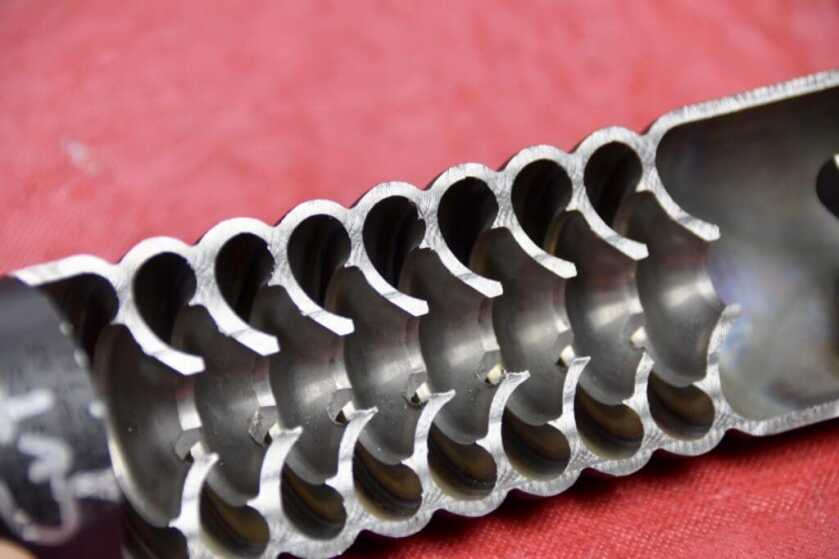
The Raptor comes in 2, 4, 6, 8, and 10 spiral lengths, with the 10 spiral being offered in 22, 30, 338, and 375 calibers. All are 100% constructed of titanium and come with the appropriate end cap, tool, flush mount, and choice of Reflex (standard or bull barrel: 1 to 5 inches in length). This Reflex, as mentioned previously, extends backward from the muzzle to increase the internal volume of the suppressor without adding more length to the firearm. Upon request, AB Suppressor will offer custom Reflex lengths, opening up your options to near infinite possibilities.

Firearm and Suppressors to be Tested
For my testing, the firearm used is a pistol with an 11″ barrel sitting on a Black Collar Arms “Pork Sword” chassis, chambered in 375 Raptor (name of the cartridge… referred to in short as “375” to avoid confusion). This wildcat is based on a 308 Winchester cartridge that is necked up to .375 caliber. On this day, I was able to get my hands on 3 different Raptor suppressors: the 6, 8, and 10 spiral for testing on the 375. I had 2 different Reflex sections (3″ & 5″) and a flush mount to also be tested with these three different spiral configurations. This meant that each suppressor could be configured in 3 different ways, leaving 9 setups for me to experiment with.

My testing was not done in the most scientific manner, so I’ll avoid providing tons of convicting sound level meter readings. Please understand that any info on this subject that I may provide will vary with temperature, atmospheric pressure, humidity, and other factors. That said, I used the readings from the B&K meter to reach my own conclusion about which suppressor was quietest and to make comparisons between each can and their configurations.
My Experience
I started with the Raptor 6 with flush mount and progressed to the Raptor 6 with 3″ Reflex, followed by the Raptor 6 with 5″ Reflex. I wore hearing protection throughout the whole test because I know how loud this fire-breathing pistol can be. The shot with the Raptor 6 and flush mount was quite loud, even through earplugs. This same suppressor with the 3″ Reflex was noticeably quieter, but still decently loud. This trend followed for the Raptor 6 with 5″ Reflex, as it was much quieter than either of the previous configurations. The first shot using the flush mount was the only shot fired this day that metered above hearing safe levels, but these results were as expected because of the combination of a large bore diameter and short barrel length of the firearm. Keep in mind, the recommendation for minimum barrel length on the .375 caliber Raptor suppressors is 22″, which we are cutting in half!

We stepped things up to the Raptor 8, beginning with the flush mount. The first shot was noticeably quieter, even more so than the Raptor 6 with a 5″ reflex. The added 2 baffles, 0.8 inches, and 1.2 ounces were enough to bring a large smile to my face, which continued to grow as we added the 3″ Reflex section. The same trend followed as with the Raptor 6. From loudest configuration to quietest, it went: Raptor 8 + flush mount, Raptor 8 + 3″ reflex, and Raptor 8 + 5″ reflex.
Now moving on to the Raptor 10. With the flush mount, the sound level meter put this can somewhere in the same ballpark as the Raptor 8 + 3″ reflex, with the previously observed trend continuing. The Raptor 10 + 3″ reflex was increasingly quiet, followed by a further decrease in dB with the Raptor 10 + 5″ reflex.
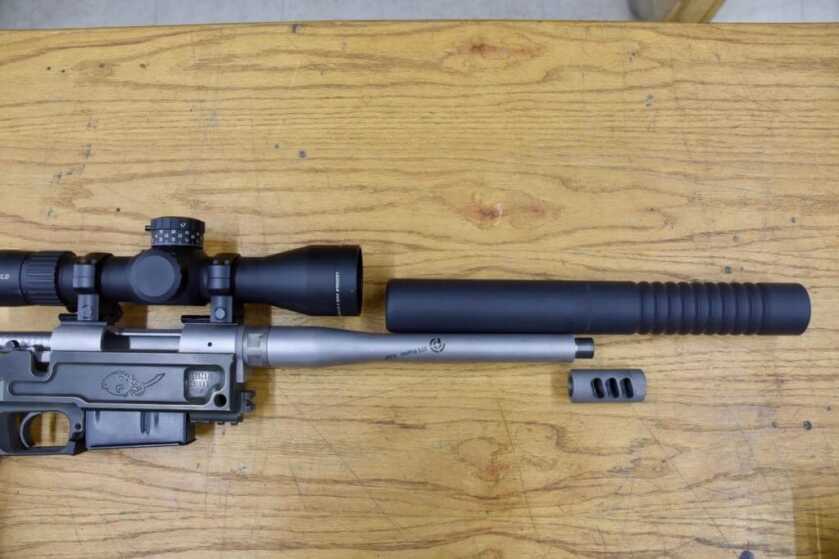
Once we concluded that the largest suppressor was indeed the quietest option, we sent a few subsonic loads that I use for hunting down the range with the Raptor 10 + 5″ Reflex on. This load is made to be subsonic at elevations of 10,000 feet, where we do the most killing of black bears back in Idaho. Consequently, it has a muzzle velocity of 900 FPS utilizing 400-grain bullets. Ambient shop noise was metering at around 94-96 dB for comparison’s sake while the suppressed, subsonic shot yielded ~112 dB. I only share this exact number because I’ll be sharing the picture of the setup used along with the meter.
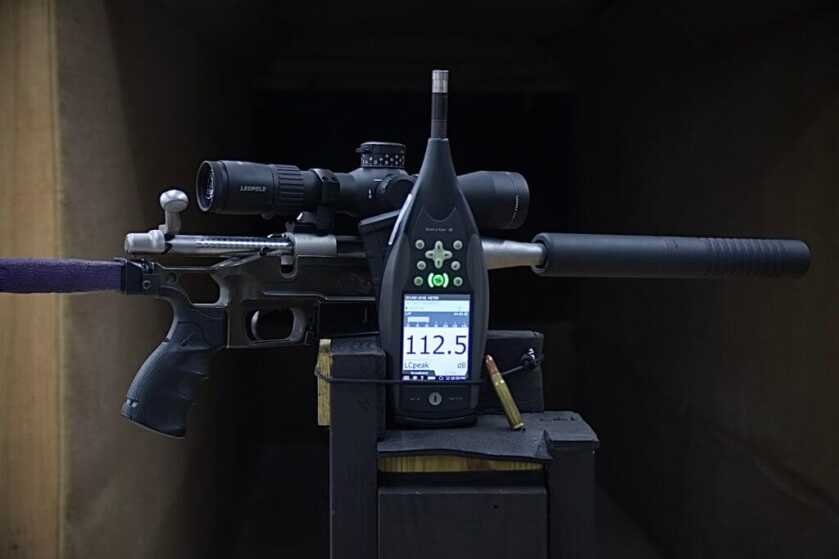
My Conclusion
After shooting these nine suppressor configurations, I faced the tough decision to decide the optimum balance of lowest weight, shortest length, and best suppression capabilities. Part of me is tempted to go all out and choose the largest configuration tested, the Raptor 10 with 5″ Reflex. This would only have the drawback of 0.9″ in added length and 2.85 more ounces than my second favorite configuration: Raptor 8 + 3″ Reflex. In comparison, the Raptor 10 with 5″ Reflex comes in at 15.6 ounces and ~7.2″ in added length to the firearm. The Raptor 8 with 3″ Reflex weighs 12.75 ounces and adds a mere ~6.3″ to the firearm. To put this in perspective, my current muzzle brake is approximately 2.5″ long.
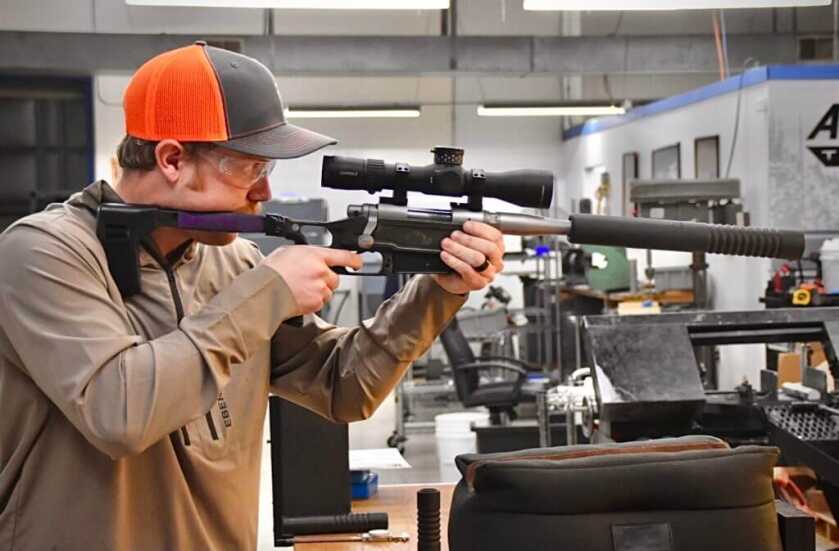
In the end, ounces equal pounds, and pounds equal pain. I chose to outfit my 375 Raptor from here forward with an AB Suppressor Raptor 8 with 3″ Reflex. I can’t say enough about how good this configuration sounded on my 375. It had a low, whoofing tone and supersonic shots were well below hearing safe. I never imagined I’d find a suppressor that could handle the large volume of gasses from this short-barreled setup, but AB Suppressor’s unique design did so wonderfully and I’d highly recommend their product to anyone looking for a durable, lightweight, and short suppressor for any application.
Learn more about AB Suppressor HERE!
***Buy and Sell on GunsAmerica! All Local Sales are FREE!***
More Pictures
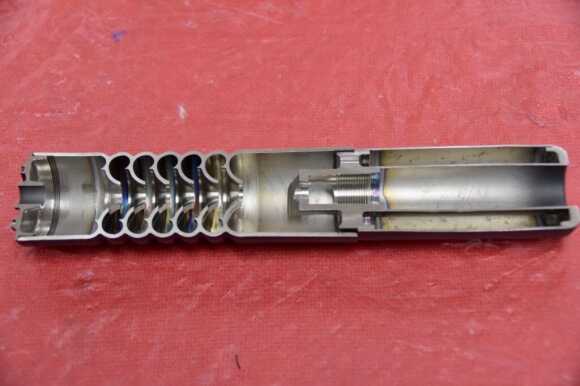
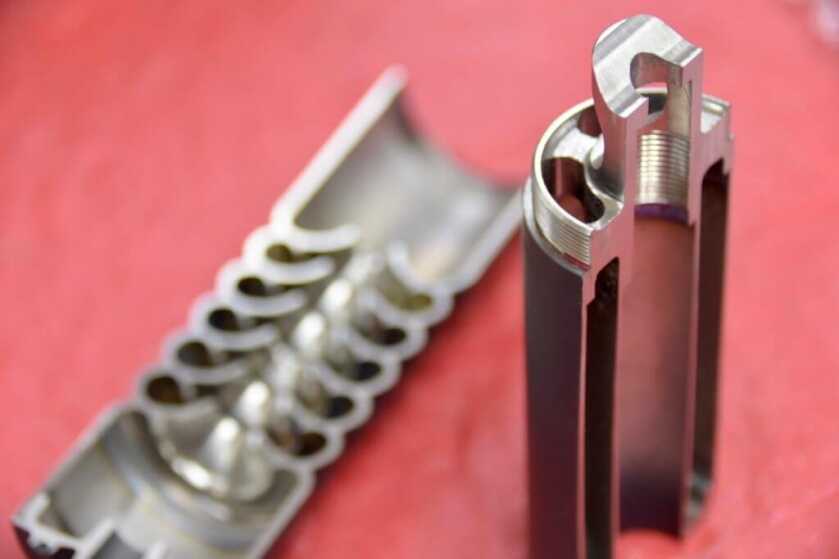
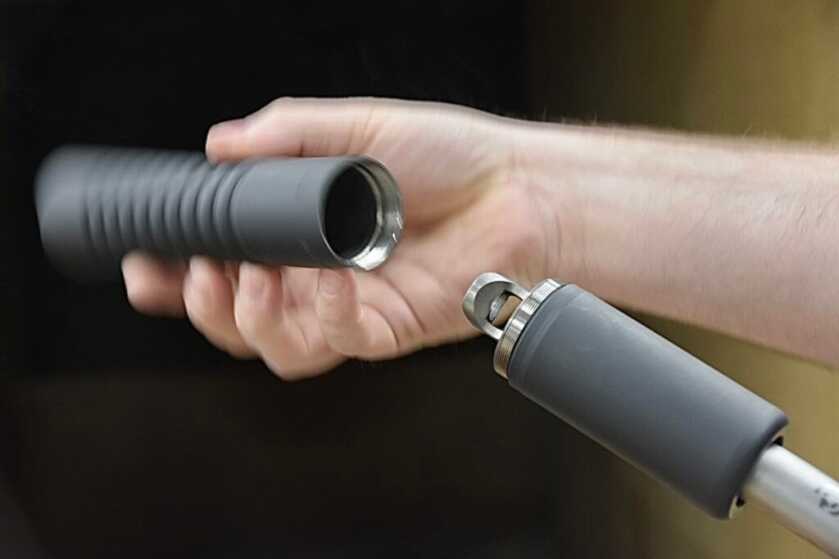


How is the muzzle brake portion that joins he reflex section to the spiral section timed to keep he ports placed correctly?
I believe you are referring to the whale-tail-like design on the reflex section? This is simply there to redirect flow backward into the reflex section, taking advantage of that space for gas capture. This is not marketed to act to reduce recoil, and I can’t say for sure if it does. to answer your question though, this does not need timed to a particular position in relation to your gun thanks to it’s symmetric design. equal and opposite forces cancel each other out.
Would you say this is as quiet as a similarly set up subsonic 300blk?
For sure!
Suppressor for 9mm sars pistol